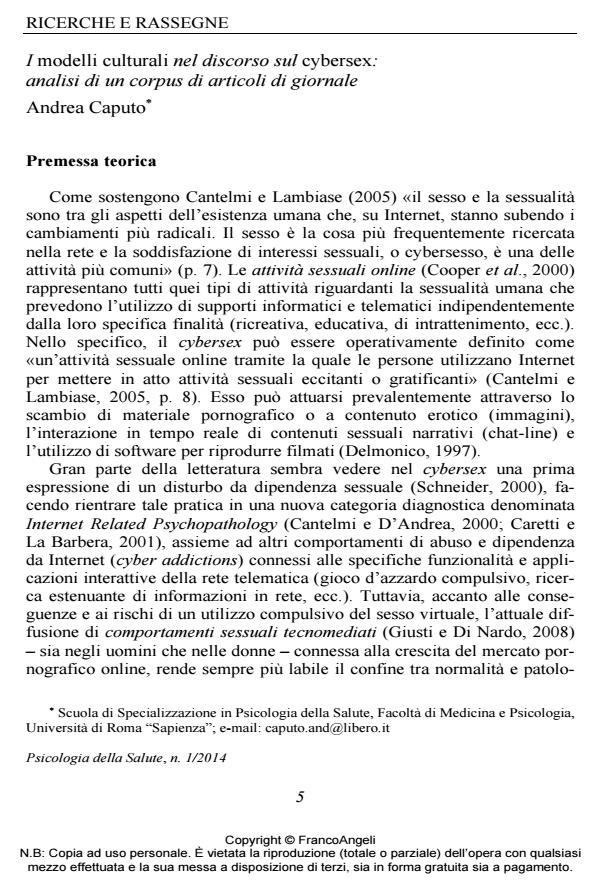Cultural models in cybersex discourse: a corpus analysis of newspaper articles
Journal title PSICOLOGIA DELLA SALUTE
Author/s Andrea Caputo
Publishing Year 2014 Issue 2014/1
Language Italian Pages 24 P. 5-28 File size 1077 KB
DOI 10.3280/PDS2014-001001
DOI is like a bar code for intellectual property: to have more infomation
click here
Below, you can see the article first page
If you want to buy this article in PDF format, you can do it, following the instructions to buy download credits

FrancoAngeli is member of Publishers International Linking Association, Inc (PILA), a not-for-profit association which run the CrossRef service enabling links to and from online scholarly content.
From an analysis of the Italian journalistic production, this study aims to detect cultural models that organize cybersex discourse in order to overcome an individualistic and medicalized paradigm proposed by the main research traditions. The emotional text analysis conducted on a corpus of 52 articles of the major national newspapers, allowed to explore the social representation of the phenomenon. The study detected 4 cultural models that refer to different cultural functions of technology for the development of online sexual practices and match specific conceptualization of cybersex as a substitute, protomental, proteiform and mythical space. Cybersex seems to be represented in terms of a process of reterritorialization of identity which suggests the crisis of the individual-context relationship, connected to the strong need of individualization, dynamic of social control, and feeling of progressive isolation. The study suggests some reflections on the growing demand for virtual sex and on the relationship between Internet and sexuality in a dynamic psychological perspective.
Keywords: Cybersex, technology, online sexual activity, cultural models, emotional text analysis, collusion
- “I Have Been Bullied at Workplace!”: A Qualitative Study on Italian Employees’ Stories Andrea Caputo, in The Spanish Journal of Psychology E25/2018
DOI: 10.1017/sjp.2018.25
Andrea Caputo, I modelli culturali nel discorso sul cybersex: analisi di un corpus di articoli di giornale in "PSICOLOGIA DELLA SALUTE" 1/2014, pp 5-28, DOI: 10.3280/PDS2014-001001